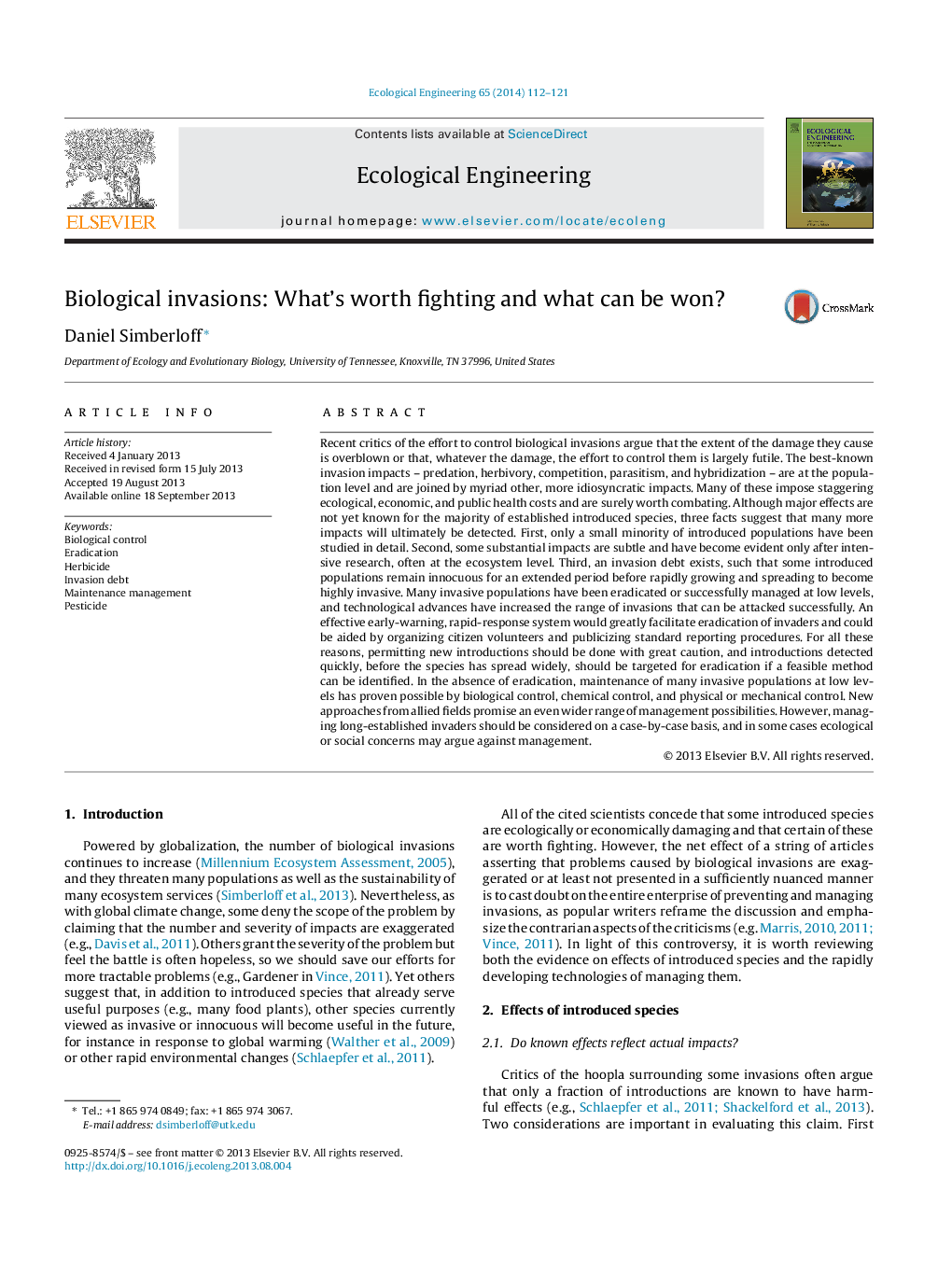| Article ID | Journal | Published Year | Pages | File Type |
|---|---|---|---|---|
| 4389450 | Ecological Engineering | 2014 | 10 Pages |
Abstract
Recent critics of the effort to control biological invasions argue that the extent of the damage they cause is overblown or that, whatever the damage, the effort to control them is largely futile. The best-known invasion impacts - predation, herbivory, competition, parasitism, and hybridization - are at the population level and are joined by myriad other, more idiosyncratic impacts. Many of these impose staggering ecological, economic, and public health costs and are surely worth combating. Although major effects are not yet known for the majority of established introduced species, three facts suggest that many more impacts will ultimately be detected. First, only a small minority of introduced populations have been studied in detail. Second, some substantial impacts are subtle and have become evident only after intensive research, often at the ecosystem level. Third, an invasion debt exists, such that some introduced populations remain innocuous for an extended period before rapidly growing and spreading to become highly invasive. Many invasive populations have been eradicated or successfully managed at low levels, and technological advances have increased the range of invasions that can be attacked successfully. An effective early-warning, rapid-response system would greatly facilitate eradication of invaders and could be aided by organizing citizen volunteers and publicizing standard reporting procedures. For all these reasons, permitting new introductions should be done with great caution, and introductions detected quickly, before the species has spread widely, should be targeted for eradication if a feasible method can be identified. In the absence of eradication, maintenance of many invasive populations at low levels has proven possible by biological control, chemical control, and physical or mechanical control. New approaches from allied fields promise an even wider range of management possibilities. However, managing long-established invaders should be considered on a case-by-case basis, and in some cases ecological or social concerns may argue against management.
Related Topics
Life Sciences
Agricultural and Biological Sciences
Ecology, Evolution, Behavior and Systematics
Authors
Daniel Simberloff,
